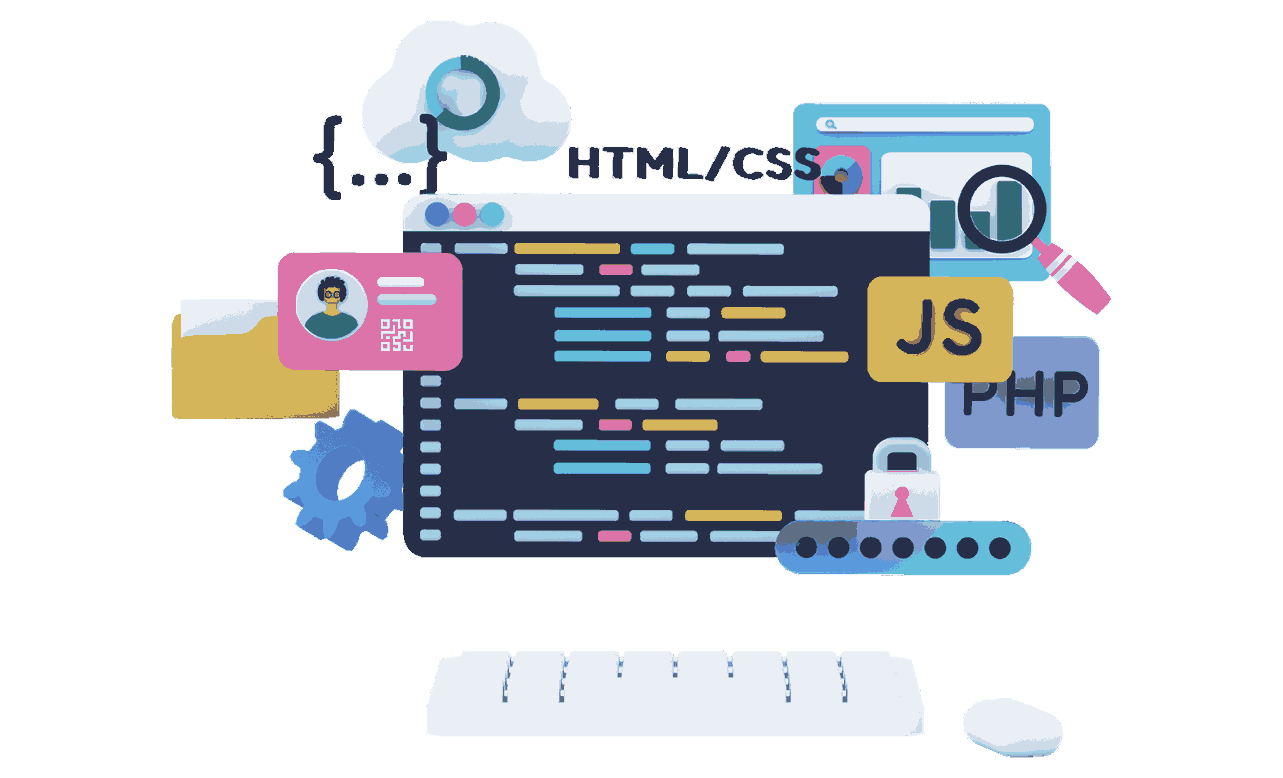Mastering Scalable System Design: A Comprehensive Guide
Scalable system design is a cornerstone of modern software development. As applications grow and user bases expand, the need for systems that can handle increased loads without compromising performance is paramount. This comprehensive guide explores the principles, components, and best practices of scalable system design, providing the knowledge to build robust and flexible architectures. Real-world case studies and practical examples also illustrate these concepts in action.
1. Understanding Scalability in System Design
Definition and Importance
Scalability refers to a system's ability to handle increasing amounts of work by adding resources. It is crucial for ensuring that applications can accommodate growing user demands without significant rework or performance degradation. According to a survey by 451 Research, 69% of organizations cite scalability as a top priority in their IT strategy. Scalability is fundamental for modern applications, particularly in the context of cloud computing and global user bases.
Types of Scalability
There are two primary types of scalability:
- Vertical Scalability: This involves increasing the capacity of a single server by adding more power (CPU, RAM). While effective in some scenarios, it has limitations in cost and maximum capacity.
- Horizontal Scalability: This involves adding more servers or nodes to a distributed system. It is generally more cost-effective and provides greater flexibility in handling increased workloads. A study by IDC found that organizations using horizontal scalability saw a 57% reduction in IT costs compared to those using vertical scalability.
2. Key Principles of Scalable System Design
Statelessness
Statelessness minimizes server-side state, making systems easier to scale. Stateless systems can handle increased loads by adding more instances, each independently processing requests. This approach is commonly used in RESTful services, where each client request contains all necessary information for processing. According to a report by Forrester, 85% of high-performing applications use stateless architectures to enhance scalability.
For more on stateless architectures and their benefits, visit GCT Solution's Application Development services page.
Loose Coupling
Loose coupling designs system components to be independent, allowing for easier maintenance and scalability. Microservices architecture exemplifies this principle, where each service performs a specific function and communicates with others through well-defined APIs. Netflix's transition to microservices allowed it to achieve a 99.99% uptime, serving over 190 million users worldwide.
You may also like this article:
Top 10 Serverless Architecture Examples to Inspire Your Projects
Asynchronous Processing
Asynchronous processing decouples tasks to avoid blocking the main processing thread, crucial for handling high loads. Message queues and event-driven architectures are common implementations, enabling systems to continue processing other tasks while waiting for slower operations to complete. Amazon uses asynchronous processing in its order processing system, enabling it to handle billions of transactions during peak shopping periods.

3. Core Components of Scalable System Design
Load Balancing
Load balancing distributes incoming network traffic across multiple servers to prevent any single server from becoming a bottleneck. It improves performance and availability. Common strategies include round-robin, least connections, and IP hash. Tools like Nginx, HAProxy, and AWS Elastic Load Balancing are widely used. According to Gartner, effective load balancing can improve system performance by up to 40%.
Caching
Caching stores frequently accessed data in a temporary storage layer to reduce load on the primary data store and improve response times. Types of caching include in-memory (e.g., Redis, Memcached) and disk-based caching. Properly implemented caching strategies significantly enhance system performance. A case study by Facebook showed that using Memcached reduced database load by 93% during peak times.
Database Optimization
Optimizing databases is crucial for scalability. Techniques include sharding, replication, and indexing. Sharding partitions a database into smaller, more manageable pieces, while replication creates copies to distribute read loads. Choosing between SQL and NoSQL databases depends on application requirements. Google’s use of sharding in its Bigtable database allows it to handle petabytes of data across thousands of servers efficiently.
4. Methodologies for Detecting and Eliminating Bottlenecks
Identifying Single Points of Failure (SPOF)
A single point of failure (SPOF) is a part of a system that, if it fails, stops the entire system. Identifying and eliminating SPOFs ensures high availability and reliability. Techniques include redundancy, failover mechanisms, and setting up mirrored databases and load balancers. For instance, LinkedIn uses a multi-data center architecture to eliminate SPOFs, ensuring a seamless user experience even during outages.
Performance Monitoring and Profiling
Continuous performance monitoring and profiling help identify bottlenecks and optimize system performance. Tools like New Relic, Datadog, and Prometheus provide insights into system health and performance metrics. Regular profiling helps understand how different components perform under various loads, allowing for targeted optimizations. Microsoft reported a 30% improvement in system efficiency after implementing continuous performance monitoring and profiling across its Azure services.
You may also like this article:
Azure DevOps in Application Life Cycle Management (ALC)

5. Real-World Case Studies and Examples
Case Study 1: Twitter's Microservices Architecture
Twitter relies on a distributed architecture to handle its massive user base and high traffic. Their system consists of multiple microservices, each responsible for specific tasks like handling tweets, user authentication, or recommendation algorithms. These microservices communicate using lightweight protocols like HTTP or a message broker such as Apache Kafka. By breaking down their system into smaller microservices, Twitter ensures better scalability and fault tolerance. Each microservice can be scaled independently, and failures in one do not impact the entire system. Twitter’s microservices architecture supports over 500 million tweets per day and handles billions of API requests daily.
Case Study 2: Google's MapReduce
Google's MapReduce is a distributed programming model and implementation for processing large datasets. It allows developers to write parallelizable algorithms, executed on massive clusters of commodity hardware. The input data is divided into smaller chunks and processed in parallel across multiple nodes, with the output consolidated to produce the final result. This approach enables Google to efficiently process petabytes of data daily, demonstrating the power of distributed systems in handling large-scale data processing. MapReduce has been integral in managing data for services like Google Search and Google Ads.
Case Study 3: Netflix's Transition to Microservices
Netflix transitioned from a monolithic architecture to a microservices architecture to handle its growing user base and streaming demands. Each microservice handles a specific function, such as user profiles, movie recommendations, or playback services. This architecture allows Netflix to scale services independently and deploy updates without affecting the entire system. By leveraging microservices, Netflix has achieved greater flexibility, scalability, and resilience, supporting over 214 million subscribers worldwide.
Case Study 4: Amazon's DynamoDB
Amazon DynamoDB is a fully managed NoSQL database service designed for high availability and scalability. It uses partitioning and replication to ensure data durability and performance. DynamoDB automatically distributes data and traffic across multiple servers, handling large volumes of read and write operations with low latency. This architecture allows Amazon to provide a highly scalable and reliable database service for a wide range of applications, supporting trillions of requests per day from customers like Lyft and Airbnb.
6. Best Practices and Advanced Techniques
Infrastructure as Code (IaC)
Infrastructure as Code (IaC) manages and provisions computing resources through machine-readable scripts, making it easier to maintain and scale infrastructure. Tools like Terraform and AWS CloudFormation enable automated, consistent, and repeatable infrastructure deployments. According to a report by Forrester, organizations that implement IaC see a 45% reduction in infrastructure management costs.
Microservices and Containerization
Microservices architecture, combined with containerization, provides a flexible and scalable environment for applications. Docker and Kubernetes are widely used for deploying, scaling, and managing containerized applications, ensuring consistency across development, testing, and production environments. Kubernetes adoption has increased by 48% year-over-year, highlighting its critical role in modern software development.
Back-of-the-Envelope Calculations
Performing rough calculations helps in the initial planning stages of system design, allowing for quick estimates of resource requirements and potential bottlenecks. These calculations provide a baseline for more detailed analysis and testing. According to a study by IDC, initial back-of-the-envelope calculations can reduce the time spent on detailed design by 30%.

Final Thought
Scalable system design is essential for modern applications to handle increasing user demands and fluctuating workloads effectively. By understanding and implementing key principles like statelessness, loose coupling, and asynchronous processing, and leveraging core components such as load balancing, caching, and database optimization, you can build robust and flexible architectures. Real-world case studies highlight the practical application of these principles, while best practices and advanced techniques offer further insights into achieving scalability. Apply these strategies to ensure your systems are prepared to scale seamlessly and efficiently.
For more insights and tailored solutions, explore GCT Solution's comprehensive range of IT services.
If you are seeking a seasoned IT provider, GCT Solution is the ideal choice. With 3 years of expertise, we specialize in Mobile App , Web App, System Development, Blockchain Development and Testing Services. Our 100+ skilled IT consultants and developers can handle projects of any size. Having successfully delivered over 50+ solutions to clients worldwide, we are dedicated to supporting your goals. Reach out to us for a detailed discussion, confident that GCT Solution is poised to meet all your IT needs with tailored, efficient solutions.
FAQs for Mastering Scalable System Design
Q1: What is scalable system design?
A1: Scalable system design refers to creating a system that can handle increasing amounts of work by adding resources, such as additional servers or more powerful hardware, without needing significant rework. This ensures that the system can grow and manage higher loads efficiently. For more details, see Foundations of Scalable Systems - O'Reilly.
Q2: What are the key types of scalability?
A2: The two primary types of scalability are:
- Vertical Scalability: Increases the capacity of a single server by adding more power (CPU, RAM). It's effective but has cost and capacity limitations.
- Horizontal Scalability: Involves adding more servers or nodes to a distributed system, offering cost-effectiveness and flexibility.
Q3: Why is statelessness important in scalable system design?
A3: Statelessness is important because it makes systems easier to scale. Each instance can independently process requests, making it simple to add more instances as needed. This is especially beneficial for RESTful services, where each client request contains all the necessary information for processing.
Q4: How does loose coupling enhance scalability?
A4: Loose coupling enhances scalability by allowing system components to be independent. This means you can scale or modify one component without affecting others, making the system more maintainable and flexible. Microservices architecture is a common implementation of loose coupling.
Q5: What role does load balancing play in scalable system design?
A5: Load balancing distributes incoming traffic across multiple servers to prevent any single server from becoming a bottleneck. It improves system performance and availability. Effective load balancing can improve system performance by up to 40%, according to Gartner. For more on load balancing solutions, visit Networking Services.
Q6: How can caching improve system performance?
A6: Caching improves system performance by storing frequently accessed data in a temporary storage layer, reducing the load on the primary data store and speeding up response times. Properly implemented caching strategies can significantly enhance system performance, as evidenced by Facebook's use of Memcached, which reduced database load by 93% during peak times. Learn more on Data Management.
Q7: What are some common database optimization techniques for scalability?
A7: Common database optimization techniques include sharding, replication, and indexing. Sharding partitions a database into smaller pieces, replication creates copies to distribute read loads, and indexing improves query performance. Google's Bigtable is an example of an efficiently sharded database.
Q8: What is a single point of failure (SPOF) and how can it be eliminated?
A8: A single point of failure (SPOF) is a part of a system that, if it fails, stops the entire system. Eliminating SPOFs involves redundancy, failover mechanisms, and setting up mirrored databases and load balancers. LinkedIn uses a multi-data center architecture to ensure high availability.
Q9: How can performance monitoring and profiling help in scalable system design?
A9: Performance monitoring and profiling help identify bottlenecks and optimize system performance. Tools like New Relic, Datadog, and Prometheus provide insights into system health and performance metrics. Microsoft reported a 30% improvement in system efficiency after implementing continuous performance monitoring.
Q10: Can you provide examples of companies that have successfully implemented scalable system design?
A10: Yes, notable examples include:
- Twitter: Uses microservices architecture to handle over 500 million tweets per day.
- Google: Uses MapReduce for processing petabytes of data daily.
- Netflix: Transitioned to microservices, supporting over 214 million subscribers.
- Amazon: DynamoDB handles trillions of requests per day. For detailed case studies, visit System Design Services.












